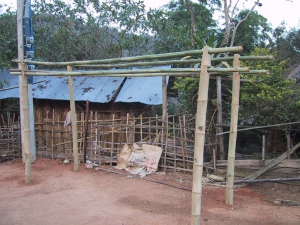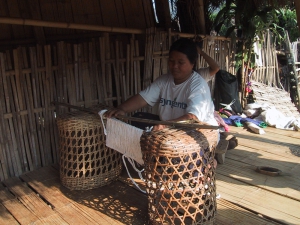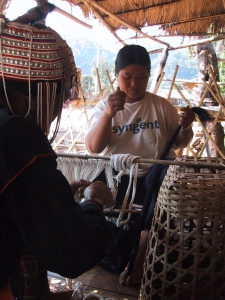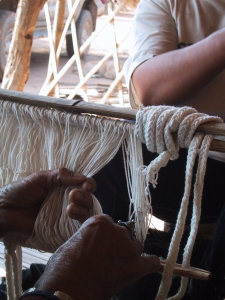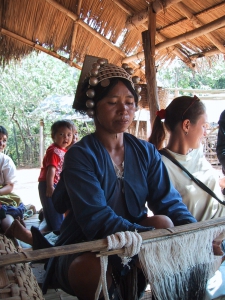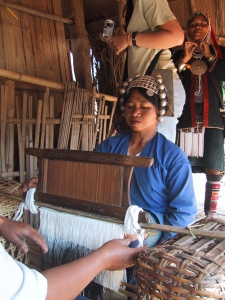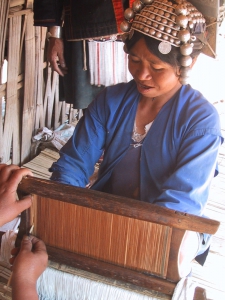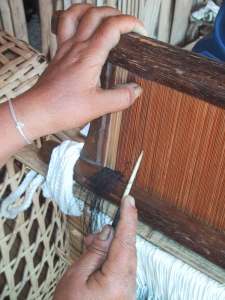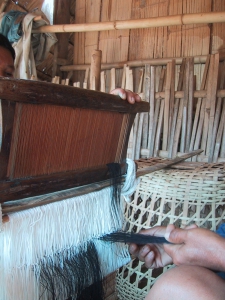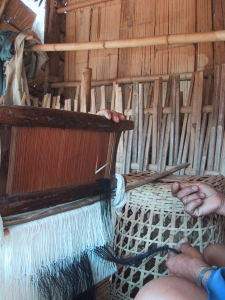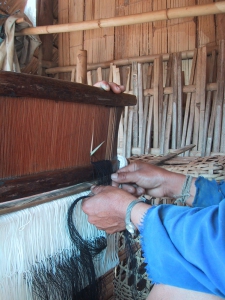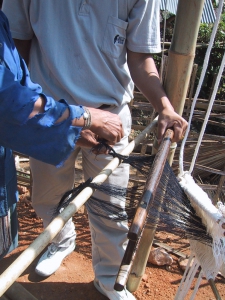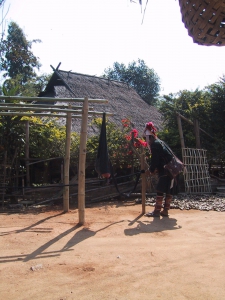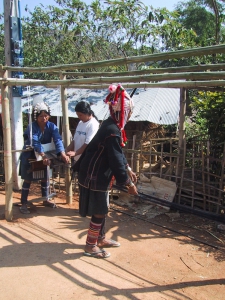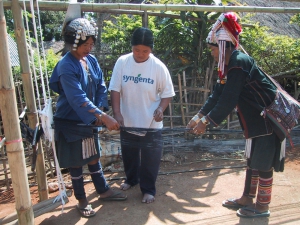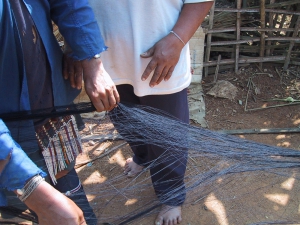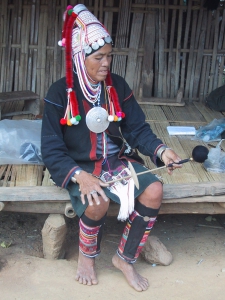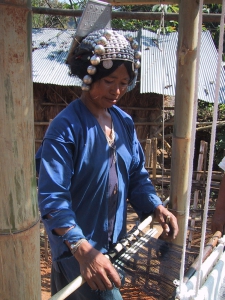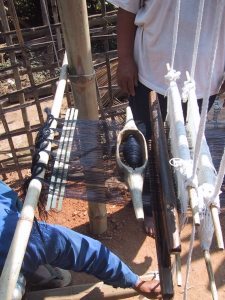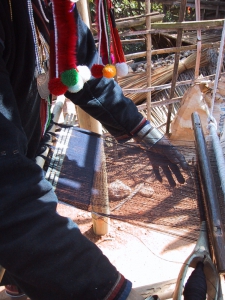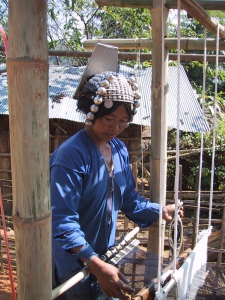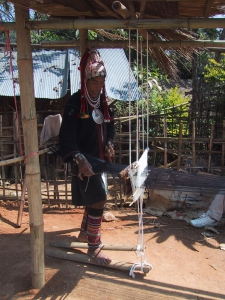When I was visiting northern Thailand, I wanted to learn how to spin using an Akha spindle, which of course meant finding someone from the Akha hilltribe to teach me. I asked around a bit, and finally wangled an opportunity to spend four days studying spinning and weaving with Ahta, my guide’s mother-in-law.
It was one of the best experiences of my entire trip. While I wasn’t a weaver at the time, I took copious photos of the weaving process, in hopes of being able to reproduce it someday. Now that I am a weaver, I appreciate it all the more.
The Akha loom is really interesting, and worth a closer look – the two final photos in the gallery show the entire loom.
As far as I know, the Akha only weave plainweave, in indigo and white – embellishments are made in embroidery afterwards.
You can read more about my adventures with the Akha in the Thailand section of my travel blog.
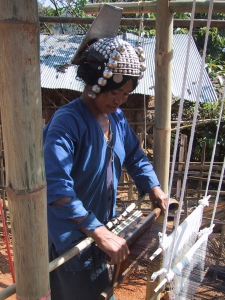 Weaving along. As the cloth grows longer, instead of advancing the warp the weaver simply moves forward along the loom. When it becomes inconvenient to weave any further, then the warp is advanced. Advancing the warp requires considerable fiddling because of the tangles, so it is done only every couple of feet.
Weaving along. As the cloth grows longer, instead of advancing the warp the weaver simply moves forward along the loom. When it becomes inconvenient to weave any further, then the warp is advanced. Advancing the warp requires considerable fiddling because of the tangles, so it is done only every couple of feet.
